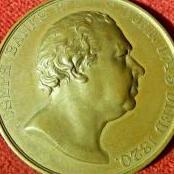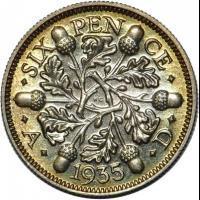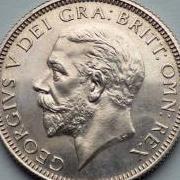Leaderboard
Popular Content
Showing content with the highest reputation on 12/09/2017 in all areas
-
I made a profit last week of £7 on a yankee. I went for a 5 way today and lost £1.50. Good fun and watch final score at 4:30 ooowing and arrrring.2 points
-
This excellent topic http://www.predecimal.com/forum/topic/8211-portcullis-varieties-on-decimal-penny/ and its more recent contributions prompted me to complete my 1p varieties survey. Some history. There are only three major articles regarding decimal bronze coinage that include details of 1 pence varieties published in contemporary magazines:- Decimal Bronze 1/2, 1 & 2 pence varieties, Coin, 25 Jan 1980 by Iain WP Dracott, K.B.Wiles and Ron Stafford, Addendum to Decimal Bronze, Coin Monthly, Oct 1984 by Iain WP Dracott, and finally, Coin Varieties: Latest Discoveries, Coin Monthly, Aug 1987, by Ron Stafford. The main points to note about these articles is that they were written by the same three people, who have cooperated on various other articles over the years, so they are aware of each others views and the other point of note is that the first two articles include an additional reverse variety that has be excluded from the third article. The excluded reverse suggests that there are two sizes of pattern on the reverse. Prior to these articles three Letters to the editor, all in Coin Monthly, Decimal Reverses, by E.B.Mackenzie dated July 1978, discusses 1972 Proof set reverses, a further letter, Decimal Reverses, from E.B.Mackenzie adds further information received from the Royal Mint regarding the 1972 proof set reverses and a final letter from E.B.Mackenzie, A Reverse Pattern, dated March 1979 discussing 1971 through 1978 proof set reverses. Data from these letters was included in the three main articles. A final article, The 1990 UK Circulation Coinage, Coin Monthly, April 1991 by P.S.MacKenzie discuses differences between circulating coinage and those in the BU and proof sets. I have looked for the different size reverses and have concluded that they don’t exist. That being the case I have continued the August 1987 series adding new obverses and reverses. An extract of the 1987 article from Coin Monthly follows: “Decimal pennies Obverse 1 (1) 111 beads (2) 1 of date to space (3) I of ELIZABETH to bead Obverse 2 (1) 111 beads (2) I of date to bead (3) I of ELIZABETH to space Obverse 3 (1) 111 beads (2) 1 of date to space (3) I of ELIZABETH to space Obverse 4 (1)112 beads (2) new portrait etc (3)last I of II to bead Obverse 5 (1) 109 beads (2) as obverse 4 (3) last I of II to space Reverse A (I) III beads (2) right leg of N in NEW to bead (3) thin numeral 1 below portcullis Reverse B (1) 111 beads (2) right leg of N in NEW to space (3) thick numeral 1 below portcullis Reverse C (1) 110 beads (2) legend now reads ONE PENNY (3) small 1 below portcullis Summary Circulation 1971 - 1 A 1972 - none minted 1973-1975 - lA 1976 - lA and 1B (rare) 1977 - lA 1978-1981 - 2A 1982-1983 - 2C 1984 - 3C 1985 - 4C 1986 - 5C Unc Sets 1982-1983 - 2C 1984 - 3C 1985-4C 1986 - 5C Proof Sets 1971 - lA 1972-1977 - lA and 1B 1978-1981 - 2B 1982-1983 - 2C 1984 - 3C 1985 - 4C 1986 - 5C? (not seen) NB: the reverse A Proofs are scarcer for 1972-1977, those of 1972, 76 and 77 being very scarce. Notes The rare circulation 1976 reverse B is very hard to find. I know of only six specimens. I found only two out of 3,681 1976 pennies checked during a sortee in 1979. If anyone should stumble upon a 1975 reverse B in change, they would have a very rare coin indeed. No one knows for sure if it even exists but the 'new reverses' first seen in the Proof sets do occur on both 1975 and 1976 2 and 10 pences issued for circulation. The earliest 1976 1 B rarity I know of was found by P S Mackenzie in late 1976/early 1977. The 1985 and 1986 circulation pennies are now extremely common, there does not seem to. be any varieties, all 1985 being type 4C and all 1986 being type 5C. The earliest reported 1985 penny was found on 22 November 1985 by Mr Symes. For the 1986 penny, the first was noticed on 14 August 1986 by Mr D Price.” End of Article. New Obverses Obverse 6 (1) 111 bb. (2) 1 of 19 lt bb. (3) I of ELIZ to sp. (4) Last I of II to sp. (5) R to bb. Obverse 7 (1) 110 bb. (2) I of 19 to sp. (3) I of ELIZ to bb. (4) Last I of II to bb. (5) R to bb. Obverse 8 (1) 110 bb. (2) I of 19 to bb. (3) I of ELIZ rt bb. (4) Last I of II to bb. (5) R rt bb. Obverse 9 (1) 109 bb. (2) 1 of 19 to bb. (3) I of ELIZ to sp. (4) Last I of II to sp. (5) R lt bb. Obverse 10 (1) 115 bb. (2) 1 of 19 sl bb. (3) I of ELIZ rt sp, (4) Last I of II sr bb. (5) R lt bb. (6) 4th Portrait. Obverse 11 (1) 110 bb. (2) New millennium (3) I of ELIZ to sp, (4) Last I of II to sp. (5) R sr bb Old Reverses Reverse A (1) 111 bb. (2) R leg of N in NEW to bb. (3) R leg of 2nd N to bb. (4) P rt bb. (5) Tall thin numeral 1 below portcullis to bb. Reverse B (1) 111 bb. (2) R leg of N in NEW to sp. (3) R leg of 2nd N to sp. (4) P to sp. (5) Tall thick numeral 1 below portcullis. Reverse C (1) 110 bb. (2) R leg of N in ONE to sp. (3) R leg of 2nd N to sp. (4) P rt bb. (5) Small numeral 1 below portcullis to sp. New Reverses Reverse D (1) 113 bb. (2) R leg of N in ONE to sp. (3) R leg of 2nd N to bb. (4) P to sp. (5) Small numeral 1 below portcullis sl bb. Reverse E (1) 111 bb. (2) R leg of N in ONE to bb. (3) R leg of 2nd N to bb. (4) P to bb. (5) Small numeral 1 below portcullis rt bb.. Reverse F (1) 109 bb. (2) R leg of N in ONE rt bb. (3) R leg of 2nd N to sp. (4) P to bb. (5) Small numeral 1 below portcullis sr bb. Notes: Reverses A through C are as original but with some additional detail. Pointings. It can be a bit confusing when discussing pointings. Which direction is one looking from? I always follow the rule of “as you read it”, so on a 1p reverse you read the NEW PENNY from the centre of the coin looking towards the rim. For example, taking the letter N of NEW you would sight from the bottom of the right hand (RH) leg, to the top of the leg and onto the boarder bead (bb) beyond. 1. One would then say the leg points to the centre of a boarder bead (to bb), or 2. slightly left or slightly right of the center of a boarder bead (sl or sr bb), or 3. right or left of a border bead (rt or lt bb), that is to the edge of the bb or very slightly into the space between boarder beads , and finally, 4. points between two boarder beads or in other words to the center of the space (to sp). When looking at the number 1, then the orientation is from the rim to the centre (as that’s “how you read it”). Boarder beads (bb) and teeth. Beads are just teeth that don’t touch an internal or external boarder or rim. Portcullises. The first report of variations in the portcullis were made by Dr R.M.Owens to Coin News in January 2013. These have become known as type 1 and type 2 portcullises. This confuses the situation slightly as the variations refer to the representations of the rivets used on the portcullis and not the actual portcullises themselves. There are two kinds of portcullis, that which was used on circulation coins from 1971 through to 1981 and on proof coins for 1971 which I call type 0 and the second type used on all other circulation, proof and brilliant uncirculated set coins and this is known as types 1 and 2. Type 0. The vertical and horizontal parts of the portcullis do not touch each other and the vertical parts are detached from the horizontal rod above them. The rivets are in relief and the positioning of the rivets is regular and even. Type 1. The vertical and horizontal parts do touch each other and the vertical parts do touch the horizontal rod above them. The rivets are in relief and the positioning of the lower two rivets on the central vertical bar varies slightly. Type 2 The vertical and horizontal parts do touch each other and the vertical parts do touch the horizontal rod above them. The rivets are incuse and and the positioning of the rivets on the central vertical and lower horizontal bar vary. Expanded Summary Obverse and Reverse pairing A note regarding the reverse designations. I have added the portcullis type and rivet position subtype to the familiar reverse designation. Summary Circulation 1971 - 1A0 1972 - none minted 1973-75 - lA0 1976 - lA0 and 1B0 (rare) 1977 - lA0 1978-81 - 2A0 1982-83 - 2C1 1984 - 3C1 1985 - 4C1 1986–88 - 5C1 1989 - 7C1 1990-91 - 5C1 1991-92 - 5D2b and 5C2b 1992 -5F2b 1993 - 9D2b, 9F1 and 9F2b 1994 - 5C1, 5D2b and 5F1 1995-97 - 5D2b 1998-99 - 10Db2 2000 - 11D2c and 11F2b 2001-07 - 11F2b 2007-08 - 11F1 2008 - 11F2b BU Sets 1982-83 - 2C1 1984 - 3C1 1985 - 4C1 1986-87 - 5C2a 1988 - 6C2a 1989 - 7C2a 1990 - 8C2a 1991-92 - 8E1 1993-97 - 8E2b 1998-99 - 10 E2b 2000-08 - 11E2b 2008 - 11F1 Proof Sets 1971 - lA0 1972-76 - lA? and 1B1 1977-81 - 2B1 1982-83 - 2C1 1984 - 3C1 1985 - 4C1 1986-87 - 5C2a 1988 - 6C2a 1989 - 7C2a 1990 - 8C2a 1991-92 - 8E1 1993-97 - 8E2b 1998-99 - 10E2b 2000-07 - 11E2b 2008 - 11E2b and 11F1 I will add pictures of the various obverses, reverses and portcullises tomorrow (with luck!).1 point
-
1 point
-
This must be his mate. He hit the jackpot , Notice not anywhere is it mentioned replica or silver. Deliberate to avoid being detected https://www.ebay.co.uk/itm/4pcs-1839-1847-Young-Head-Crowned-shiled-within-branches-Victoria-Dei-Gratia/1627247170321 point
-
Metal detecting find? https://www.ebay.co.uk/itm/Victoria-Silver-Crown-1847-Metal-Detector-Find/222747356768?_trkparms=aid%3D111001%26algo%3DREC.SEED%26ao%3D1%26asc%3D20160727114228%26meid%3Df23b28810c474ee986221da3b508dd60%26pid%3D100290%26rk%3D3%26rkt%3D4%26sd%3D332480897193&_trksid=p2060778.c100290.m35071 point
-
1 point
-
1 point
-
I've just dug this up, interesting reading.... https://www.businesscompanion.info/en/quick-guides/distance-sales/internet-auction-sites-and-marketplaces1 point
-
Nice idea. Another method would be to put up an eBay Guide with images etc. If someone wants to write one, and if they don't have an eBay account then I would be happy to put it up on my eBay account (I am too much of a newbie to write such a thing!).1 point
-
One method that might help, would be to put up a 'spoof' advert on eBay showing pictures of known fake coins with explanations i.e. those already being advertised, with a request not to bid on the items shown. I've seen this done before and it was helpful. Could be done from a 'new' eBay account so as to avoid compromising one's own normal username. It would be interesting to see how long it would take eBay to twig and take the auction down for that non-item.1 point
-
"Interesting, so in other words are you saying CCF as a US forum has more "pull" with eBay? " Probably. They have nearly 50,000 members, the majority of whom are American. " How do we go about reporting it to CCF is there a thread we need to post to specifically." Yes, and it can be complicated the first time you use it. https://www.coincommunity.com/forum/forum.asp?FORUM_ID=162 Looking back, I've reported 42 items. 29 were taken down. "Ebay should have a UK coin expert online watching the listings. It would not take much for them to spot the fakes and cut them off at source. " They used to have a fakes and counterfeits committee. Bob Gurney aka Swamperbob from CCF was one of the members. Ebay disbanded it. Probably for being too effective.1 point
-
1 point
-
Report it via Action Fraud making sure to mention that eBay was notified and did nothing.1 point
-
I,ve just reported Ebay to Watchdog about fraudulent coin listings being sold for fortunes, even although I know for a fact that the listing has been reported numerous times. Ebay should have a UK coin expert online watching the listings. It would not take much for them to spot the fakes and cut them off at source. Ebay would also still generate the same income or more if it was knownly cleaned up, with coins sold by genuine sellers.1 point
-
Interesting, so in other words are you saying CCF as a US forum has more "pull" with eBay?1 point
-
better than a whole mint one in my opinion, the fact a Roman or saxon person or even later made a hole in it for what ever reason, has some real personal contact to it, if that makes sense, i'd say the hole was contemporary with the age of the coin, and not done at a later date as this was from a villa site that i discovered a few years back, take the Groats of Edward I they always nearly turn up gilded and made into a brooch, rare as hens teeth unaltered1 point
-
1 point
-
1 point
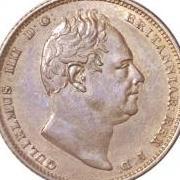
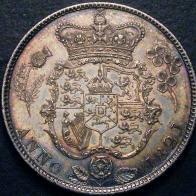
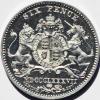
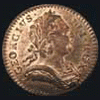
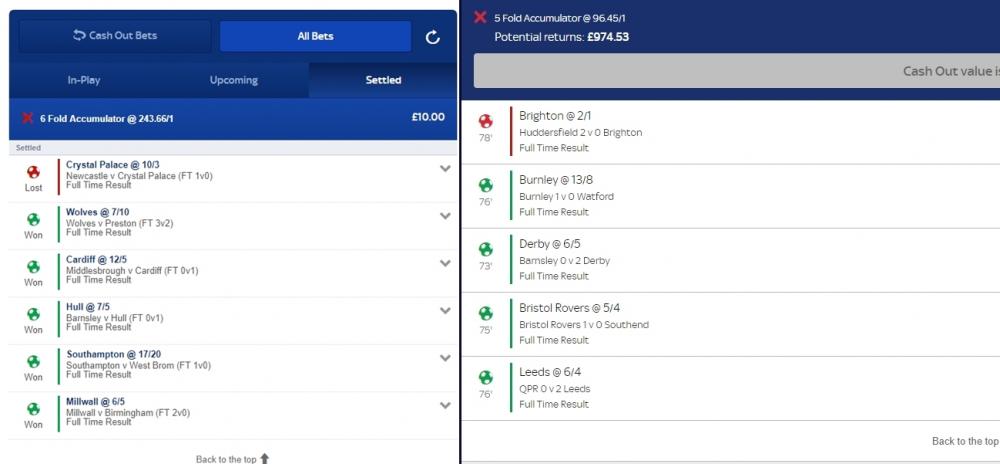
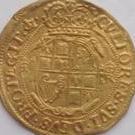
.jpg.85107a3080d4d841d53f6238a832e1c5.jpg)
.jpg.090787ad4d3f5ab300a5e410ff951af0.jpg)

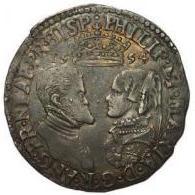
.jpg.3d6874d8f8eca6ed0678c126de4fb9b2.thumb.jpg.061f9faed5d4a1c82b1d93813b8e785c.jpg)
